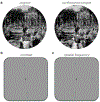Spatial attention alters visual appearance
- PMID: 30572280
- PMCID: PMC7661009
- DOI: 10.1016/j.copsyc.2018.10.010
Spatial attention alters visual appearance
Abstract
It is well established that attention improves performance on many visual tasks. However, for more than 100 years, psychologists, philosophers, and neurophysiologists have debated its phenomenology-whether attention actually changes one's subjective experience. Here, we show that it is possible to objectively and quantitatively investigate the effects of attention on subjective experience. First, we review evidence showing that attention alters the appearance of many static and dynamic basic visual dimensions, which mediate changes in appearance of higher-level perceptual aspects. Then, we summarize current views on how attention alters appearance. These findings have implications for our understanding of perception and attention, illustrating that attention affects not only how we perform in visual tasks, but actually alters our experience of the visual world.
Copyright © 2018 Elsevier Ltd. All rights reserved.
Conflict of interest statement
Conflict of interest: none
Figures



References
-
- Lennie P: The cost of cortical computation. Curr Biol 2003, 13:493–497. - PubMed
-
- Carrasco M: Covert attention increases contrast sensitivity: Psychophysical, neurophysiological and neuroimaging studies. Prog Brain Res 2006, 154:33–70. - PubMed
-
- Carrasco M: Spatial Attention: Perceptual modulation. In The Oxford Handbook of Attention. Edited by Kastner S, Nobre aC: Oxford University Press; 2014:183–230.
-
- Nakayama K, Mackeben M: Sustained and transient components of focal visual attention. Vis Res 1989, 29:1631–1647. - PubMed
Publication types
MeSH terms
Grants and funding
LinkOut - more resources
Full Text Sources

